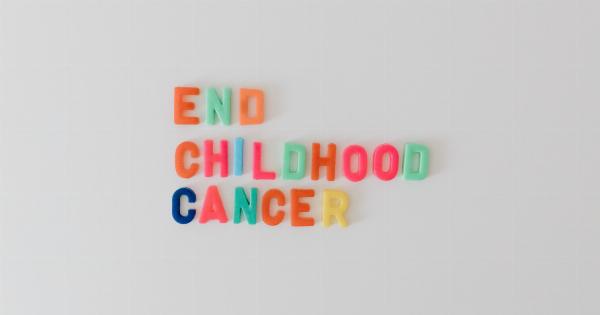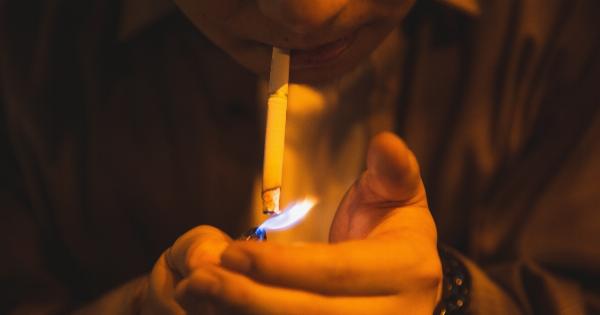Liver cancer is becoming an alarming issue among individuals aged 30 to 59 and over 60. Over the past few years, there has been a significant increase in the number of cases reported in these age groups.
With the rising incidence rates, it is crucial to understand the factors contributing to the surge in liver cancer occurrences and the necessary steps for prevention and early detection.
The Alarming Rise in Liver Cancer Cases
The increase in liver cancer incidences among individuals aged 30 to 59 and over 60 has become a cause for concern in the medical community.
Previously considered a disease predominantly affecting older individuals, liver cancer is now affecting a much younger population. This shift in demographics necessitates a deeper examination of the reasons driving this trend.
Potential Causes of the Surge
Several factors contribute to the surge in liver cancer cases, particularly in the age groups of 30 to 59 and over 60:.
1. Hepatitis B and C Infections
Hepatitis B and C infections are significant risk factors for liver cancer. These viral infections can lead to chronic liver inflammation, causing liver cells to become damaged and potentially develop cancerous growths.
Unprotected sexual contact, sharing needles, or direct contact with infected blood are common modes of transmission.
2. Excessive Alcohol Consumption
Excessive alcohol consumption is a known contributor to liver cancer. Regular and heavy alcohol intake can lead to liver cirrhosis, a condition characterized by the replacement of healthy liver tissue with scar tissue.
This scarring increases the risk of liver cancer development.
3. Non-Alcoholic Fatty Liver Disease (NAFLD)
Non-alcoholic fatty liver disease, commonly associated with obesity and metabolic disorders, is another leading cause of liver cancer.
NAFLD occurs when excessive fat accumulates in the liver, causing inflammation and potential liver damage, which can progress to liver cancer if left untreated.
4. Environmental Factors
Exposure to certain environmental factors, such as industrial chemicals, toxins, and aflatoxins (a type of fungal toxin found in moldy grains and peanuts), can increase the risk of developing liver cancer.
Occupational exposures or consuming contaminated food products can significantly impact liver health.
5. Genetic Predisposition
Some individuals may have an inherited risk for liver cancer due to specific genetic mutations. These genetic factors can predispose individuals to liver cancer and may explain the occurrence of the disease in younger age groups.
Prevention and Early Detection
Prevention and early detection play a crucial role in reducing the incidence of liver cancer and improving survival rates. Here are some essential strategies:.
1. Vaccinations
Getting vaccinated against hepatitis B can significantly reduce the risk of liver cancer associated with this viral infection.
Vaccinations are particularly important for individuals at higher risk due to their occupation, frequent travel to endemic regions, or a history of risky behaviors.
2. Regular Liver Function Tests
Regular liver function tests aid in monitoring liver health by measuring specific enzymes and proteins in the blood. These tests help identify potential liver problems early on, allowing for timely intervention and treatment if necessary.
3. Maintaining a Healthy Lifestyle
Adopting a healthy lifestyle can minimize the risk of liver cancer. This includes limiting alcohol consumption, quitting smoking, maintaining a balanced diet rich in fruits and vegetables, and engaging in regular physical activity.
4. Timely Treatment of Underlying Liver Diseases
Treating underlying liver diseases, such as hepatitis B and C or non-alcoholic fatty liver disease, is essential to prevent the progression to liver cancer.
Seeking appropriate medical care and following recommended treatment protocols can significantly reduce the risk.
5. Environmental Awareness and Protection
Being aware of potential environmental hazards and taking necessary precautions is crucial for liver cancer prevention.
This involves using protective gear in occupational settings, ensuring proper ventilation in workspaces, and consuming food products that have undergone quality control measures.
Conclusion
The alarming rise in liver cancer occurrences among individuals aged 30 to 59 and over 60 demands immediate attention and action.
Addressing the potential causes, implementing preventive measures, and promoting early detection are key to reducing the burden of liver cancer on these age groups. By working together, we can combat this growing health concern and improve the overall well-being of individuals at risk.






























